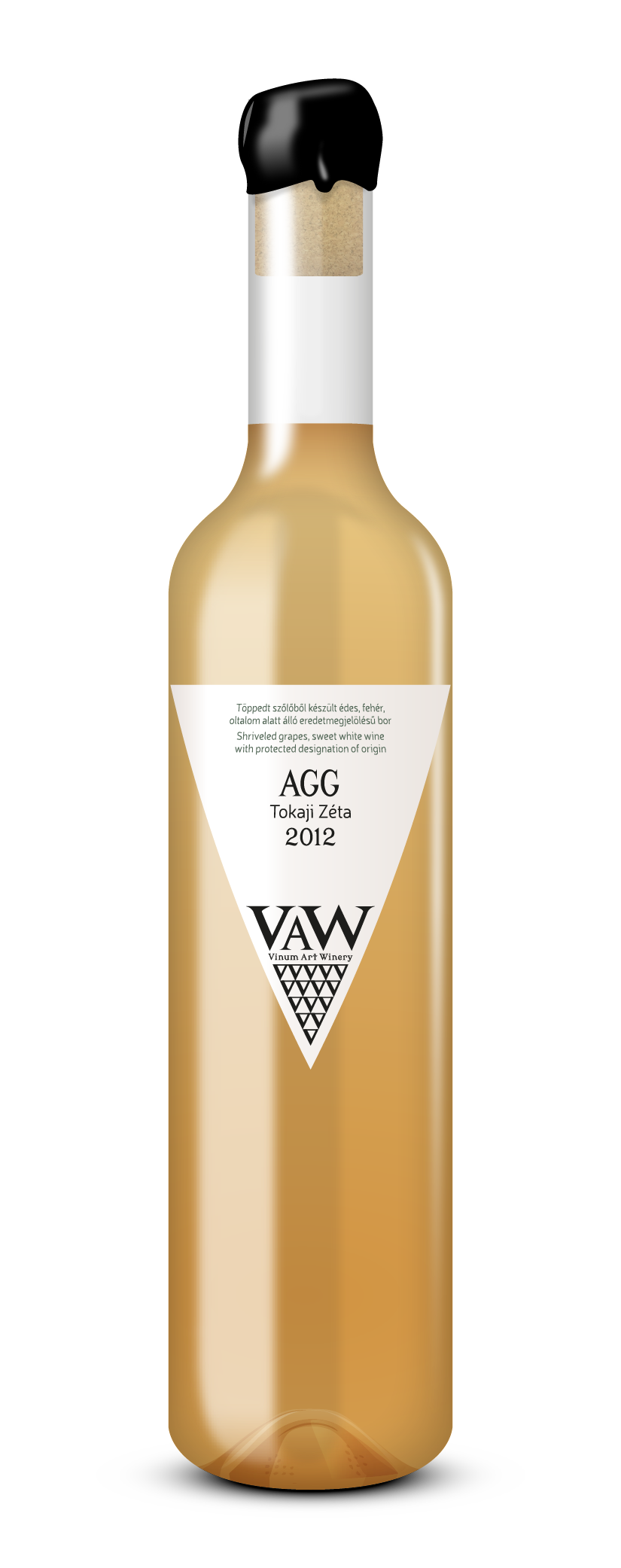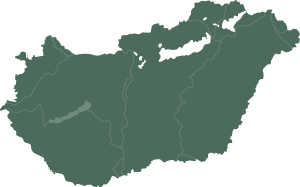Personal opinion:
This wine speciality can only be made if the weather is gracious.
It is worth poring over the fact that this occurs roughly every five years.
This year we managed to make a concentrated taste that has a very high sugar content and is almost gelatinously thick. Everybody’s friend, a unisex wine.
Gastronomical pairing:
A drink to accompany a drink? Why not?
What we need is a pleasant cup of tea – preferably black tea – and then may come this special dessert wine. One can almost bite at it.
About the Zeta variety:
Zeta – or Oremus, as it is also known – is a white wine variety of Hungarian improvement. It was improved by the crossing of the Bouvier and Furmint varieties by Ferenc Király and his colleagues in 1951.
It was previously called Oremus because of the similar name of a slope. In 1999 the name ‘Zeta’ became accepted.
It is of moderately strong growth, with canes of medium thickness. Its leaves are lobate and serrated. It primarily excels at early ripening and the ability for the aszú process. Its productivity and drought-tolerance are medium.
It ripens in the second half of September, four to six weeks earlier than the Furmint. Its clusters are cone-shaped, compact and medium-sized. It is, however, rather prone to Peronospora or downy mildew, and powdery mildew.
The region and its history:
It cannot be established with surety today who originally planted the southern slopes of the Tokaj region (Hegyalja) with vine. It is, however, certain, that there was viniculture here already before the settlement of the Magyars in Hungary.
After the invasion of the Tatars (1241-1242) Béla IV invited Italian grape-growers into the country who settled in Olaszi (Bodrogolaszi), Sárospatak and Liszka (Olaszliszka). They, the Italian viniculturists, were the ones who laid the basis of international fame for the wine region, bringing with them the varieties of their homeland located more to the south. It is also a proven fact that the most illustrious variety in Tokaj, the Furmint, is also of Latin or Italian origin („mea nec Falernae temperant vites, neque Formiani pocula colles” [Horatius]).
The name Tokaj-Hegyalja came from the town of Tokaj and from the surrounding region originally only named Hegyalja (“piedmont”). The Hungarian name ‘Hegyalja’ was already in use in the 16th century. The Latin name of the region, Districtus Submontaneus or “Piedmont region” also appeared later as a public administration title.
The Tokaj castle was known all over Europe in the 16th-17th centuries, so foreign wine merchants looked for “Tokaj wine” in the entire “Hegyalja” region and the region became known all over Europe as “Tokaj’s highland” (in Latin: Montium vitiferorum Tokaiensis, in German: Tokayer Gebürg or Tokajer Wein-Gebürg). This was slowly neutralized also in the Hungarian parlance, and the area was called “Tokaj-Hegyaljának” from the 18th century onwards, besides the official “Hegyalja” name. The latter was only replaced officially by the name “Tokaj-Hegyalja” from the early 20th century.
It is an old saying that the Tokaj wine is the king of wines and the wine of kings. This divine wine speciality truly is the most distinguished of the premier Hungarian varieties, and it is also a fact that several royalties had the bottled Tokaj wine on their table. Not only royalties, however, but also the uncrowned monarchs of the arts.
(e.g.: Mozart, Goethe, Schubert, Baumberg, Rossini).
Climate and geography:
The Tokaj wine region is situated in an 87-kilometre long and 3-4-kilometre wide area of 5500 hectares, in a triangle bordered by three characteristic hills, that of Abaújszántó, the Sátor-hill of Sátoraljaújhely, and Tokaj’s Kopasz-hegy, bordered by 28 settlements.
The Tokaj wine region has a continental climate. In most places there is volcanic base-soil (andesite, rhyolite, and the tuffs of these), and black soil, rich in humidity, that evolved on this. On the volcanic rock, rich in minerals, full-bodied wines with vivid acids and mineral notes can be produced.
Because of the lower acid content, parts with yellow soil (e.g. the Kopasz-hill) are favourable for wines of a softer character; these slopes are more suitable for growing more fragrant varieties.
Botrytis cinerea – that causes the aszú process or noble rot – is not only characteristic of Tokaj-Hegyalja, but can also be found in other wine regions (Arad-hegyalja, Mór). However, due to the combination of the production site, the special micro-climate, the surrounding rivers (Bodrog, Tisza) and the right wine variety (Furmint, Hárslevelű or “Linden leaf”, Muscatel, Zeta, Kövérszőlő or “Fat grape”, Kabar) the aszú process occurs here, year after year. A characteristic feature of the cellar system of the wine region that is carved out of rhyolite tuff is the noble mould, Cladosporium cellare, covering the walls in a thick layer. W This is only found here and in the Rhein wine cellars, in the world. This fungus plays an important role in ensuring the quality of Tokaj wines.
NAME: AGG
YEAR: 2012
VARIETY: Tokaji Zéta
DISTRICT: Tokaj
CLASS: Sweet white wine made from shrivelled grapes with protected designation of origin
Product of Hungary
Bottle volume: 500ml
Alc.9,0%vol
Contains sulphites


